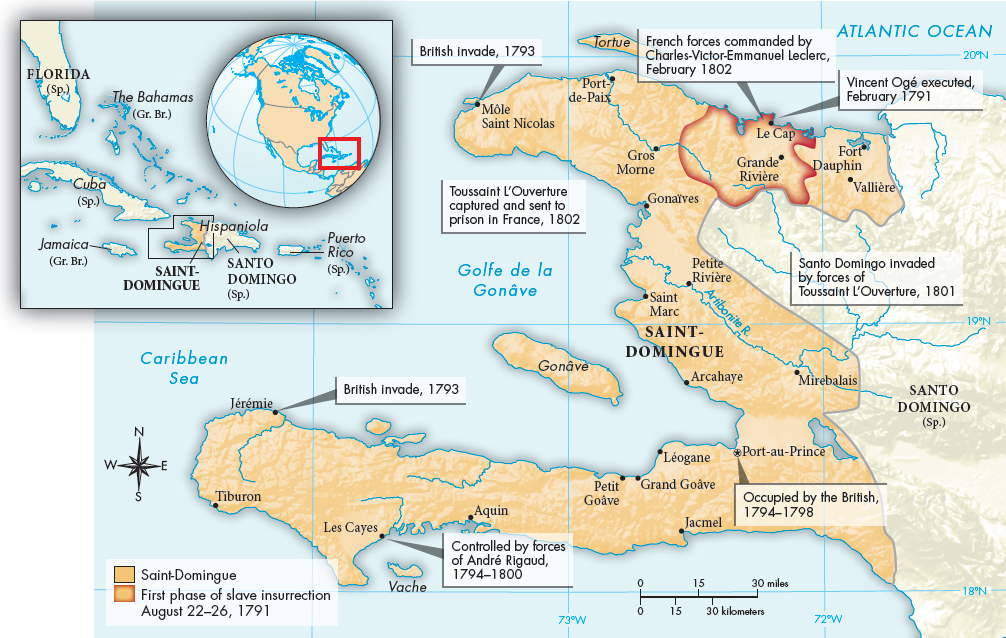Understanding World Societies:
Printed Page 667
Chapter Chronology
The Outbreak of Revolt
Just as the sans-culottes helped push forward more radical reforms in France, the second stage of revolution in Saint-Domingue also resulted from decisive action from below. In August 1791 slaves took events into their own hands. Revolts began on a few plantations on the night of August 22. As the uprising spread, rebels joined together in an ever-growing slave army. During the next month enslaved combatants attacked and destroyed hundreds of sugar and coffee plantations.
On April 4, 1792, as war loomed with the European states, the National Assembly issued a decree extending full citizenship rights to free men of color. The Assembly hoped this measure would win the loyalty of free men of color and their aid in defeating the slave rebellion.
Warfare in Europe soon spread to Saint-Domingue (Map 22.3). Since the beginning of the slave insurrection, the Spanish colony of Santo Domingo, on the eastern side of the island of Hispaniola, had supported rebel slaves. In early 1793 the Spanish began to bring slave leaders and their soldiers into the Spanish army. Toussaint L’Ouverture (TOO-sahn LOO-vair-toor) (1743–1803), a freed slave who had joined the revolt, was named a Spanish officer. In September the British navy blockaded the colony, and invading British troops captured French territory on the island. For the Spanish and British, revolutionary chaos provided a tempting opportunity to capture a profitable colony.

MAP 22.3The War of Haitian Independence, 1791–1804Neighbored by the Spanish colony of Santo Domingo, Saint-Domingue was the most profitable European colony in the Caribbean. In 1791 slave revolts erupted in the north near Le Cap, which had once been the capital. In 1770 the French had transferred the capital to Port-au-Prince, which in 1804 became capital of the newly independent Haiti.
Desperate for forces to oppose France’s enemies, commissioners sent by the newly elected National Convention promised freedom to slaves who fought for France. By October 1793 the commissioners had abolished slavery throughout the colony. On February 4, 1794, the Convention ratified the abolition of slavery and extended it to all French territories.
The tide of battle began to turn when Toussaint L’Ouverture switched sides. By 1796 the French had regained control of the colony, and L’Ouverture had emerged as a key military leader. (See “Individuals in Society: Toussaint L’Ouverture”.) In May 1796 he was named commander of the western province of Saint-Domingue (see Map 22.3).
